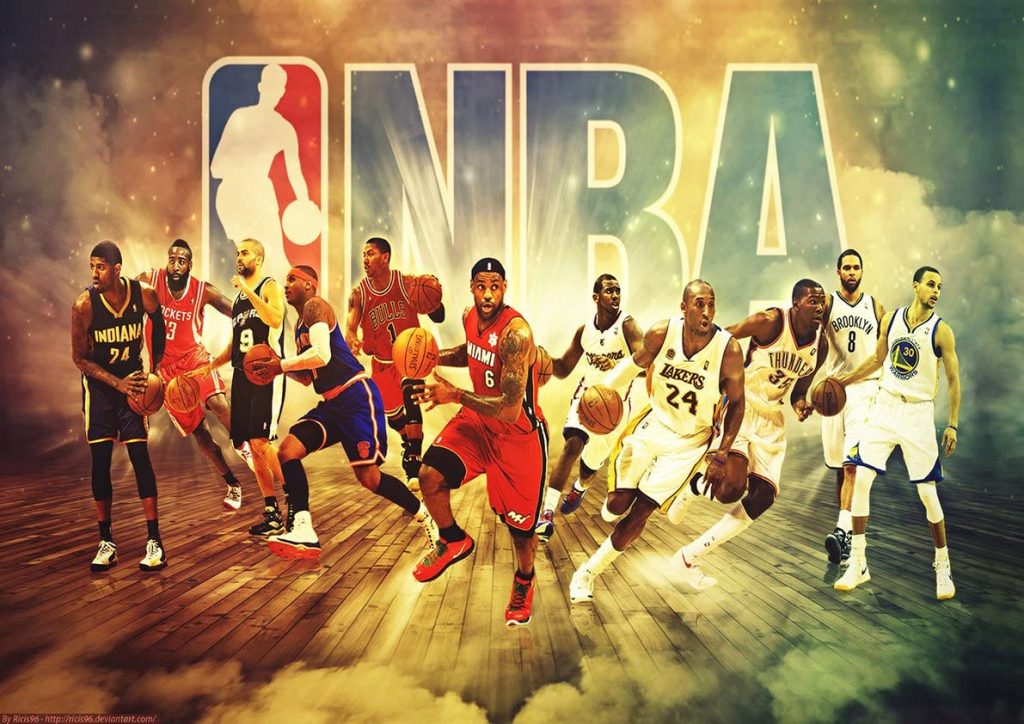
Basketball is one of the most popular sports in the world, with only soccer being in front of it by some accounts. The most popular basketball league in the world, without a doubt, is the NBA league.
Today, the NBA is a multi-billion dollar business, with many die-hard fans across the globe and a plethora of international players who are taking over the league by storm.
With that in mind, we decided to write a detailed history of the league, its many trials and tribulations, changes and challenges it faced in order to become what it is today.
But before we start, let’s take a quick look at the history of basketball itself.
The Birth of Basketball
Contents
- 1 The Birth of Basketball
- 2 History of the NBA
- 2.1 The Beginnings
- 2.2 Modernizing the Game
- 2.3 The First Expansion
- 2.4 Rule of the Celtics
- 2.5 The Logo
- 2.6 Basketball Wars
- 2.7 The Merger
- 2.8 Fall from Grace
- 2.9 Rising Popularity
- 2.10 Bird vs. Magic
- 2.11 Bad Boys of Detroit
- 2.12 Dream Team
- 2.13 The Bulls Era
- 2.14 Make Room for Texans
- 2.15 A New King Arrives
- 2.16 One German against the World
- 2.17 Warriors vs. Cavaliers Years
- 3 The Future of the NBA – What Comes Next?
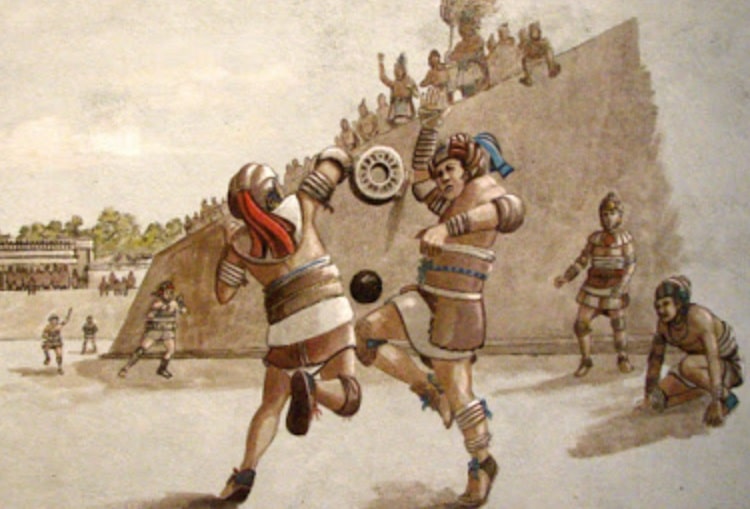
While many similar games were played in ancient times, like the Mayan version of the game called Mesoamerican ballgame played with a rubber ball, the true father of basketball as we all know it now is Dr. James Naismith.
Naismith was a PE teacher in Springfield, Massachusetts and at the turn of the 19th century, he was given the task of creating an indoor game to keep the kids in shape. His original 13 rules of basketball saw the light of day in 1891 and the game we all love was quietly born.
Today, the father of basketball is remembered thanks to The Naismith Memorial Basketball Hall of Fame. This museum opened in 1959 in Springfield, the place where it all started. The Hall of Fame is home to the years of history of basketball, many of them tightly related to the modern NBA.
Pre-NBA Years
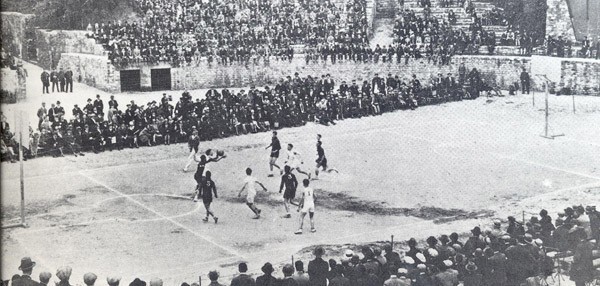
From the invention of basketball to the formation of the NBA many years have passed but the game was played in the USA nonetheless. At first, the game was spread to other parts of the country, and later to Europe, with the help of the Young Men’s Christian Association (YMCA).
However, colleges had the biggest role in the popularization of the sport at the start of the 20th century after the formation of the collegiate Basket Ball Rule Committee in 1905. In 1909, this organization officially became a part of the National Collegiate Athletic Association (NCAA), while the NCAA’s men’s basketball tournament was founded in 1939 and spurred the huge rise in popularity. Today, millions of people tune in to watch NCAA basketball, especially the infamous March Madness tournament.
While colleges were spreading the love for basketball through the US, first professional teams started to form. The first professional league was the National Basketball League (NBL), founded in 1898. This league was abandoned after a few years but it was rebooted in 1937 before being merged with another professional league called Basketball Association of America (BAA) in 1949 to create the National Basketball Association.
History of the NBA
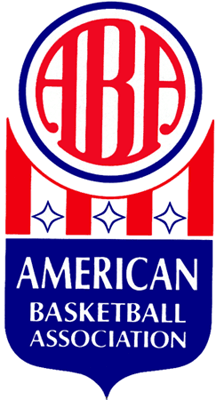
The NBA was officially founded in 1946 as the Basketball Association of America, or BAA. The league had 11 teams initially but quickly lost 4 of them to the rival NBL.
The BAA name didn’t last long since the league decided to merge with the NBL to create the National Basketball Association on August 3rd, 1949. The merger came after a meeting in New York between the two leagues and marked the begging of the NBA as we know today.
The Beginnings

The Philadelphia Warriors were the first NBA Champions in 1946-1947
The newly-founded league was initially made up of 17 teams. However, the number of teams in the NBA quickly dwindled during the 1950s, reaching the lowest point during the 1954-1955 season when only 8 teams competed for the NBA championship.
The teams that played the 54/55 season were New York Knicks, Boston Celtics, Minneapolis Lakers, Philadelphia Warriors, Fort Wayne Pistons, Rochester Royals, Syracuse Nationals and Tri-Cities Blackhawks. All of these eight franchises are still in the league today, although most of them have changed cities and names in the coming years.
During the early years of the league, Minneapolis Lakers dominated the competition with 5 titles, led by one of the first stars of the game, center George Mikan. Mikan was the true pioneer of the game. He was 6ft, 10in tall and one of the first giants in the game dominated by big men for many decades.
Modernizing the Game
One of the first rule changes the NBA made in an attempt to make the game more interesting and engage the audience was introducing the 24-second shot clock. This rule is still in use today and it was incorporated to discourage stalling and improve the pace of the game.
This change turned out to be a very smart move since fans liked the faster pace and more scoring compared to the previously dull and slow tempo where many teams tried to keep the ball in their possession in order to win the game.
The First Expansion

The NBA league today has 30 teams that compete for the title, which means that 22 teams were added since the 1954-1955 season. The first expansion wave started in the 1960s when the league grew to 14 teams in 1968 after previously adding franchises like Chicago Bulls, Milwaukee Bucks, Seattle Supersonics, Phoenix Suns, and others.
However, not all things were going great for the NBA. In 1967, another league was formed to compete with the NBA’s monopoly on basketball. The new league was called the American Basketball Association (ABA) and it quickly gained popularity. During the following years, the two leagues would often fight over teams, players and profit, until their ultimate merger in 1976.
Rule of the Celtics
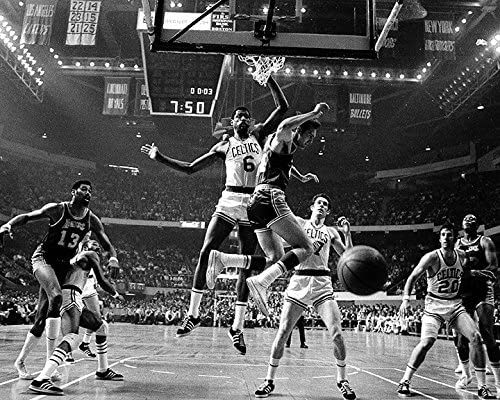
After Minneapolis Lakers dominated the league in the 50s, the NBA saw another dynasty in the 60s. The Celtics drafted Bill Russell in 1957 to accompany their star point guard Bob Cousy, putting the most important cog into their machinery. With Red Auerbach as their coach, Boston Celtics won 11 NBA titles in 13 seasons. From 1959 to 1966, the Celtics won 8 straight championships, setting the record that will probably stand as long as the NBA exists.
The domination of the Boston team during the 60s was the main tale of the NBA. However, it was not the only one.
In 1959, center Wilt Chamberlain entered the NBA and joined the Warriors franchise. Chamberlain was one of the biggest NBA stars ever, a dominant athletic force in the paint and a skillful scorer and rebounder with individual single-game records in both categories (100 points, 55 rebounds). And while Russell had more team success with the Celtics, their rivalry marked the next decade of the NBA.
The Logo
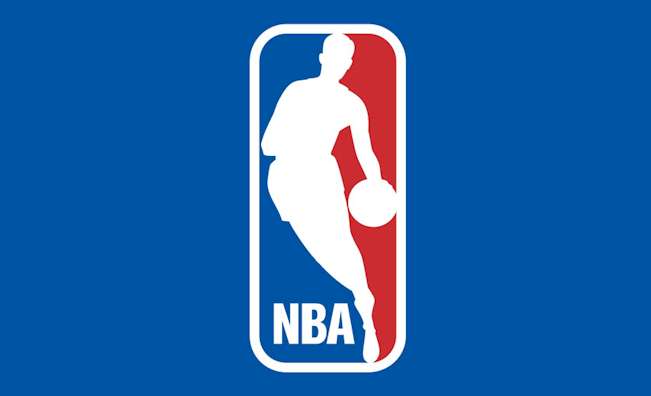
The well-known NBA logo was designed by Alan Spiegel in 1969, the man who also oversaw the design of Major League Baseball (MLB) logo the year before.
And while the NBA officials refused to acknowledge that the logo was based on any individual player, the basis for the logo was a photograph of Jerry West in action. Despite the claims by the NBA, Jerry West, the first man to win the Finals MVP reward, is still known by his nickname “The Logo”.
The new NBA logo debuted in 1971 and quickly became an iconic symbol recognized all across the world. The logo still stands, with small changes made to the NBA wordmark in 2017.
Basketball Wars
Although ABA was not the first league to challenge the NBA since it became the main basketball league in the USA (there was the failed project called American Basketball League too), it was the more serious challenge that the NBA had to face in its history.
ABA was founded in 1967 and the first commissioner of the new league was the NBA legend George Mikan. This gave the novel league credibility and with a few different rules (30-second shot clock, inclusion of the three-point line), ABA managed to challenge NBA for the best players in the country.
For example, ABA signed some of the biggest stars of the 1970s, like Julius Erving and many other great players like George Gervin, Artis Gilmore, David Thompson, Rick Barry, etc. One of the reasons for this was the introduction of the Spencer Haywood Hardship Rule that allowed players to join the league and become professionals before they finish college, if they have financial hardships. Despite contesting this in court, the NBA also incorporated this rule after losing the case against ABA. Basically, this rule is the true origin of the one-and-done rule in the NBA today, where players become eligible for the draft after one year of college.
With so many innovations, ABA was true competition for the NBA. But the leaders of both leagues soon realized that they won’t be able to coexist and that the best way to end this “basketball war” is to merge the two leagues together.
The Merger
According to some sources, forcing a merger with the NBA was the ultimate goal of ABA teams all along. In fact, buying an ABA team was way cheaper than buying an existing or expansion NBA team, so many ABA team owners considered this as a lucrative investment.
In 1976, the merger negotiations began. In the end, four ABA teams were absorbed into the NBA – Denver Nuggets, Indiana Pacers, New York Nets and San Antonio Spurs. As part of the deal, these four teams were not allowed to draft any players in the 1976 NBA Draft.
Two other ABA teams, Kentucky Colonels and St. Louis Spirits, received buyouts after the merger. The Colonels received a one-time buyout that allowed their owner to buy an existing Buffalo Braves, an existing NBA team.
The owners of Spirits, however, negotiated a percentage of television revenues from other ABA teams, in perpetuity. This could easily be described as a deal of the century since it netted the owners of Spirits more than $300M until 2014, when they agreed to give away their right to future payments for a one-time buyout of $500M.
The last remaining ABA team, Virginia Squires, didn’t receive anything since they had ceased operations just before the merger negotiations began. Players from the teams that didn’t become a part of the new NBA were dispersed to the teams that joined the league. The addition of the four ABA teams brought the total number of teams in the league to the highest number yet – 22.
Fall from Grace
Unlike the 60s when the Celtics dominated the decade, the 70s were a much more competitive era in the NBA. The Celtics were still a major force at the start of the decade but with more teams in the league, the competition became stronger. Other teams have caught on to the Celtics and we saw a few new champions like Milwaukee Bucks, New York Knicks, Golden State Warriors, Washington Bullets, Seattle Supersonics and Portland Trail Blazers.
This decade saw some great players, especially Kareem Abdul-Jabbar, Walt Frazier, Moses Malone, Pete Maravich, etc. However, despite the competitiveness of the league, TV ratings were declining and attendances were not that great either. The end of the decade also brought drug-related player problems to the league and all these things threatened to derail the NBA.
Rising Popularity
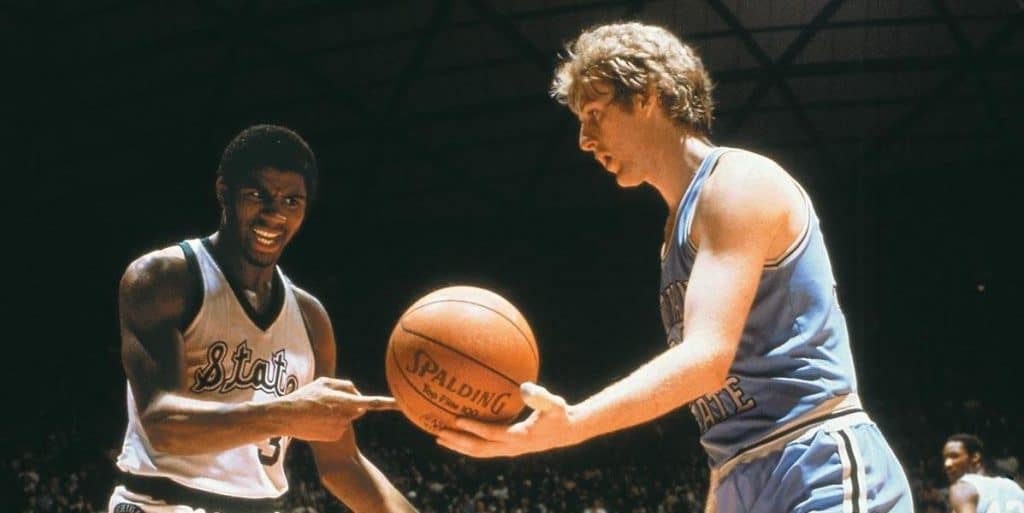
Luckily for the NBA, in 1979 two rookies that would change the face of the league have entered the NBA draft. That was the year when Magic Johnson and Larry Bird joined Lakers and Celtics, two biggest franchises and created a long-lasting rivalry.
The league also incorporated a new change in 1979 by adding the three-point field goal that ABA introduced a decade before. This made the game more attractive and shifted the focus from big men a little, although the game remained pretty similar for a couple of decades more.
In 1984, another important rookie joined Chicago Bulls. Michael Jordan, the man who would become the global face of basketball, began his NBA career after being drafted 3rd in the 1984 NBA Draft. And while Michael would have to wait for the 90s to arrive for his first title, it was obvious from the start that he was bound for greatness.
On February 1, 1984, a major change happened in the management of the league. David Stern became commissioner of the NBA. He remained in that position until 2014 and many would agree that he was the man who transformed the NBA into the global force as it is today.
Bird vs. Magic
Despite the fact that Jordan has arrived at the scene, the 80s were mostly reserved for the Celtics-Lakers rivalry. Led by the two icons, the games between these two teams were exciting and full of talent. While Bird and Magic were the faces of the two franchises in this era, the teams were packed with other great players.
The “Showtime” Lakers also had Abdul-Jabbar, James Worthy, Bob McAdoo, Kurt Rambis, while the Celtics featured big names like Kevin McHale, Nate Archibald and Robert Parish, the man who played the most games in the NBA (1611). These two teams have won 8 titles in the 80s, with Lakers taking home 5 championships and Celtics getting three.
Bad Boys of Detroit
The domination of the two biggest dynasties in the league was only broken by 76ers in 1983 before the “Bad Boys” from Detroit took over at the end of the decade. With two championships in 1989 and 1990, they were the epitome of team spirit, grinding and dirty tactics.
This Pistons team was led by Isaiah Thomas but the team was full of useful, hard-working players like Dennis Rodman, Joe Dumars, Bill Laimbeer, Rick Mahorn and Mark Aguirre. Their first title came after they swept the Lakers in the 1989 NBA Finals, while their second championship was won over Trail Blazers. Pistons brought the end of an era but a new dynasty was lurking around the corner.
Dream Team
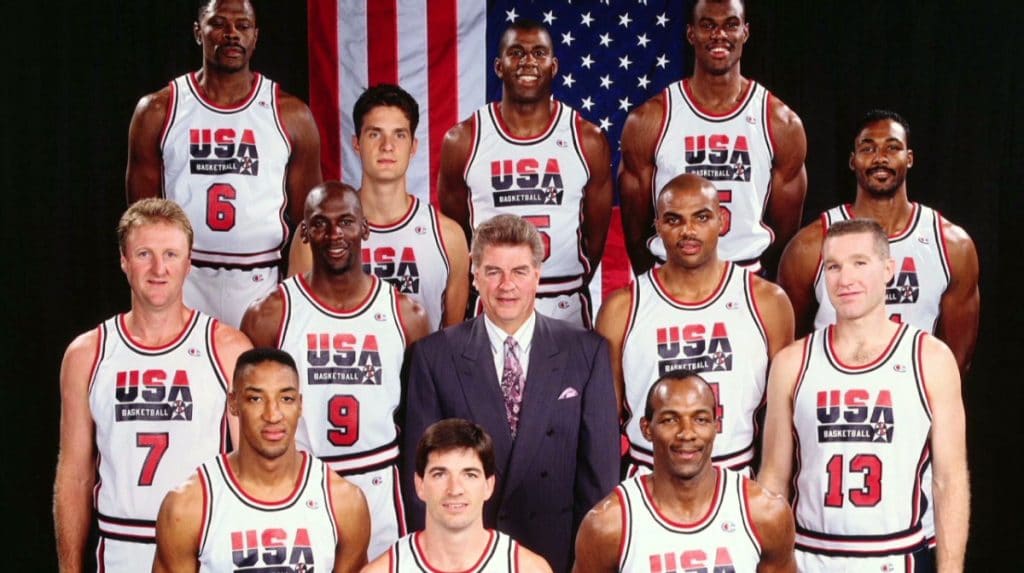
One of the most important events for the NBA league came in 1989, when a decision was made that made the history of basketball. Before that, the USSR basketball team won the gold medal in the 1988 Olympic Games, beating the USA team in the semifinals. The Soviet victory came after they fielded a team of “amateurs” – soldiers, students and working men who were, in reality, getting paid by their country to play basketball. This has been going on for a while but in 1989, FIBA finally made the decision to change the rule and allow professionals to compete in the Olympics.
While the NBA was initially not very enthusiastic about sending their main stars to compete for the USA, they lacked the foresight to see how important the newly-dubbed “Dream Team” would become for the league’s popularity in other countries.
Even before the 1992 Olympics arrived, Dream Team became a global phenomenon, bringing huge crowds everywhere they showed up. The team consisted of the biggest NBA names and one college player – in honor of the previous amateur system. The final roster of the 1992 Dream Team included Michael Jordan, Magic Johnson, Larry Bird, David Robinson, Charles Barkley, Scottie Pippen, John Stockton, Karl Malone, Chris Mullin, Patrick Ewing, Clyde Drexler and Christian Laettner, the only college player on the team.
The team went on to win the gold medal in the 1992 Olympics, beating opponents by an average of 44 points. However, the global impact that the Dream Team had, coupled with the era of “Air Jordan”, turned the NBA into a global money-making machine once and for all.
The Bulls Era
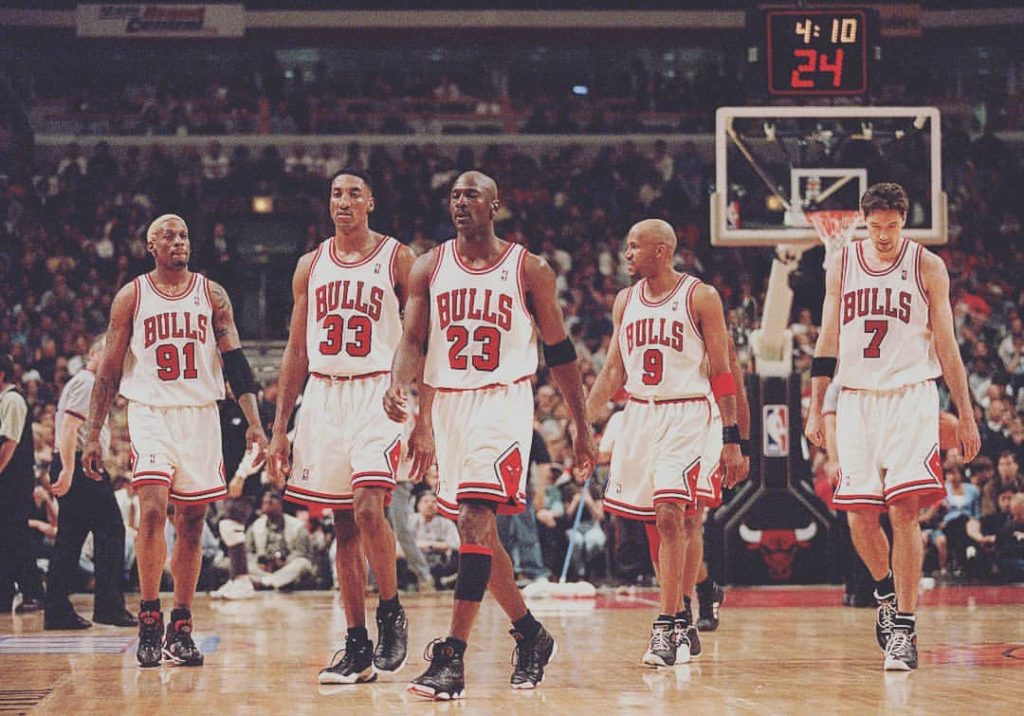
After the two consecutive titles by Detroit Pistons, the NBA was ready for a new champion. In 1991, the Bulls era began. Chicago won its first championship lead by Michael Jordan, a universally touted best player in the history of basketball. The team also had other great players but the biggest impact, next to Jordan, was made by Scottie Pippen and Dennis Rodman. The team went on to win two more titles in 1992 and 1993, to become the only team next to Lakers and Celtics to win three championships in a row.
Shortly before the start of the 1993-1994 season, Jordan shocked the world when he announced his retirement from basketball at the age of 30. Citing the loss of desire and wanting to try himself at baseball, Jordan left a huge hole and spurred hopes of other teams. The opportunity was seized by Houston Rockets, who won two consecutive titles led by their “Twin Towers”, Hakeem Olajuwon and Otis Thorpe.
During the 1995-1996 season, Michael Jordan decided to come back to Bulls. The team struggled until that point but when Jordan came back it all turned better for Bulls. The team went on to their second three-peat, winning a total of 6 championships under the guidance of the coach Phil Jackson.
Make Room for Texans
After the second Jordan retirement in 1999 and the loss of Phil Jackson, Scottie Pippen and Dennis Rodman in the offseason, the Bulls fell apart completely. But another dynasty was building in San Antonio, a team that will dominate the 2000s along with Los Angeles Lakers.
The first title for San Antonio Spurs came in 1999, in the season that was shortened due to the lockout because of failed negotiations between the league and the National Basketball Players Association (NBPA). The Spurs were led by David Robinson and Tim Duncan, coached by Greg Popovich.
Meanwhile, in LA, Lakers were getting ready to get back to winning. After they have acquired Phil Jackson from the Bulls, they were rightfully hoping to win some titles since they already had a packed team led by their superstar duo of Kobe Bryant and Shaquille O’Neal. This was proven to be the right move right away since Lakers managed to win 3 championships in the row at the start of the 21st century.
The rest of the 2000 decade was marked by Spurs, who managed to win three more championships. We also saw Pistons lifting the O’Brien Trophy, becoming perhaps the only team in history without a superstar to achieve this. In 2006, Miami Heat won its first NBA title led by Dwayne Wade and Shaquille O’Neal. Boston Celtics also made a comeback to the big scene after they formed their “Big Three” with Paul Pierce, Kevin Garnett and Ray Allen. The decade ended with a bang thanks to the 7-game final between Celtics and Lakers and the two consecutive Lakers championships led by Bryant and Pau Gasol.
A New King Arrives
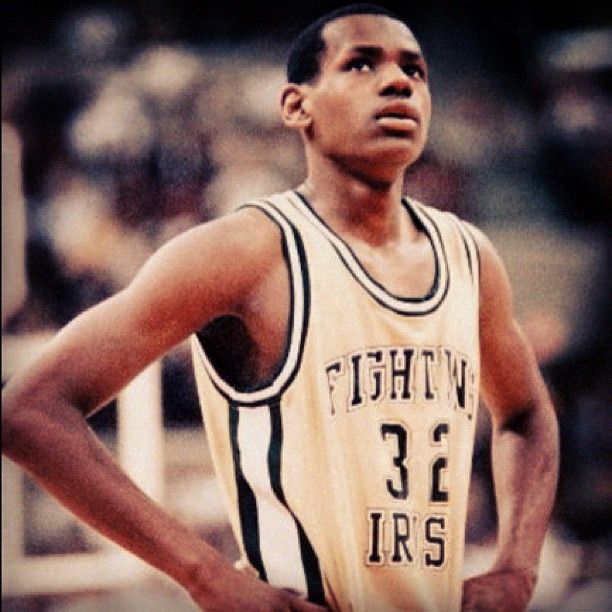
After Michael Jordan retired, the NBA was in search for his successor at the throne. Many touted Koby Bryant to be next Jordan, until the world saw a kid from Akron, Ohio who dominated his high-school competitors in an unprecedented way. The kid’s name was LeBron James.
After landing with Cleveland Cavaliers as a 1st pick in the 2003 NBA Draft, James quickly proved worthy of the hype. He became a perennial All-Star after his second season in the league and led the lowly Cavaliers team to the NBA Finals in 2007.
During the summer of 2010, James became an unrestricted free agent. In a media frenzy that lasted the whole summer, the entire world waited to see who will James play for at the start of the 2010-2011 season. In a televised announcement dubbed “The Decision”, James told the world that he is going to Miami to play alongside Wade and Chris Bosh.
One German against the World
With the might “Big Three” at their disposal, the Miami Heat team was the huge favorite to win many titles at the start of the 2010s. But their first try was not a successful one since they have failed to win the title after losing the NBA Finals to Dallas Mavericks led by Dirk Nowitzki, one of the best international players in the history of the league.
Despite this initial failure, the Heat went back to the finals for the next three years, winning two titles in 2012 and 2013. Their plans for three-peat were ruined by San Antonio Spurs in 2014, which was the 5th title in the history of the franchise.
After this failed attempt, LeBron James was once again a free agent. In the summer before the 2014-2015 season, James decided to go back to Cleveland and try to bring the first championship to his home state of Ohio.
Warriors vs. Cavaliers Years
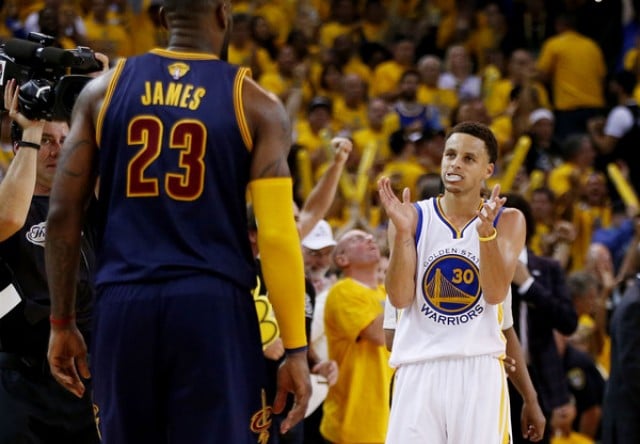
The second part of the 2010s was marked by two teams – Golden State Warriors and Cleveland Cavaliers. The Cavs managed to put two stars on their team to surround LeBron, with Kyrie Irving and Kevin Love playing the supporting role.
Meanwhile, in the Bay Area, another dynasty was growing. Golden State became a perennial playoff team thanks to their drafting prowess. During their losing years, they have managed to draft the core of a championship team – Steph Curry, Clay Thompson and Draymond Green.
The first battle between two teams in 2015 ended with the 4-2 win for Warriors, who got their first title since 1975. The same two teams took the court in the 2016 NBA Finals but this time the Cavs emerged victorious, despite the fact that Warriors broke the regular season record with 73 wins.
In the 2016-2017 offseason, a new bargaining agreement came into place and raised the cap significantly for all teams. This gave the Warriors an opportunity to sign another star player to their team and they did it by bringing one of the best players in the NBA, Kevin Durant, to their already stoked team. The Warriors won two more consecutive championships, beating Cavs in both finals, before ultimately falling to Raptors in the 2019 NBA Finals. This was the first title for a Canadian team in the NBA.
The Future of the NBA – What Comes Next?
The NBA has made itself into one of the most popular and most profitable leagues in the world. Despite the fact that soccer is the most popular sport in the world, while football is often touted as the most popular sport in the US, the NBA is deservedly in the top 5 sports leagues according to the revenue.
The most important reason for this comes from the fact that the NBA is truly a global force today. It is popular on all continents, partially due to the fact that many international players are leading the league today. But that was not always the case.
Going International
Even though the first international player in the NBA, an Italian-born Canadian Hank Biasatti, came into the league back in 1946, the NBA was not really open to international players for a long time. The first real influx of international players started in the 80s, with players like Detlef Schrempf and Rik Smits paving the way for players across the pond.
In the 1990s, especially after the 1992 Olympics, the NBA started to bring more and more international players. Some of the biggest names include Drazen Petrovic, Vlade Divac, Arvydas Sabonis, Sarunas Marciulionis and Toni Kukoc, an important piece of the second Bulls three-peat.
One of the first teams to rely heavily on international players were the San Antonio Spurs. Their amazing scouting efforts overseas brought them the likes of Tony Parker, Manu Ginobili, Boris Diaw, etc. Tony Parker was the first international to win the Finals MVP, if we exclude Olajuwon who was born in Nigeria but played for the USA national team.
The first international player that truly became the face of the franchise was Dirk Nowitzki, leading his Mavs to the title and winning both the MVP award and the Finals MVP award. Pau Gasol played a very important role in the two Lakers championships in 2009 and 2010.
The Young Guns
The proof of just how global the NBA is today is seen in the faces of the young stars today. While the US players are still leading the league, many teams now rely on international players to lead them to success.
Giannis Antetokounmpo is the reigning MVP, Nikola Jokic is the face of Denver Nuggets, Dallas Mavericks are putting their future on the backs of Luka Doncic and Kristaps Porzingis, etc.
While the global outlook of the NBA is certain, the future also looks bright for the league, partially because of the global impact it has. What teams and players will have the most success in the upcoming years remains to be seen but the NBA will be the true winner in any case.
